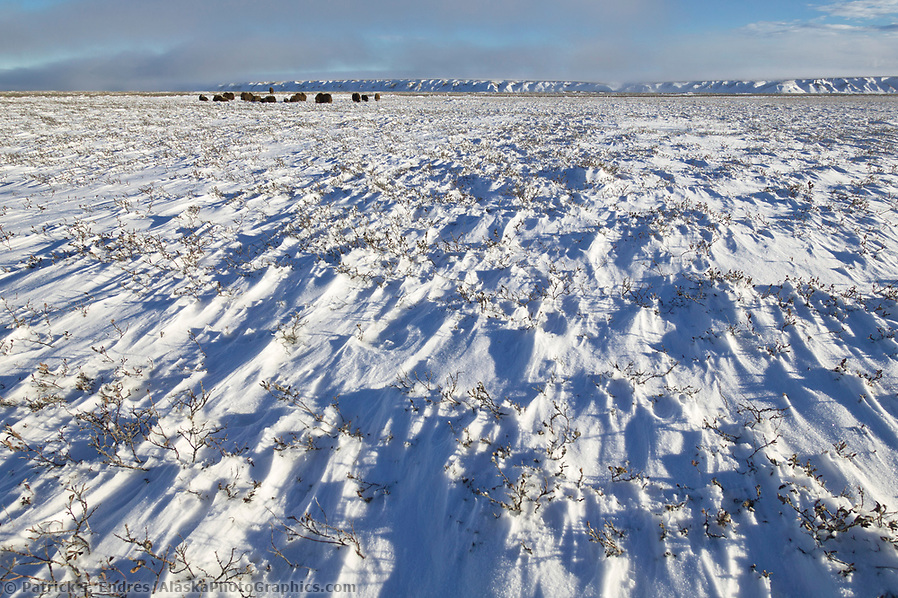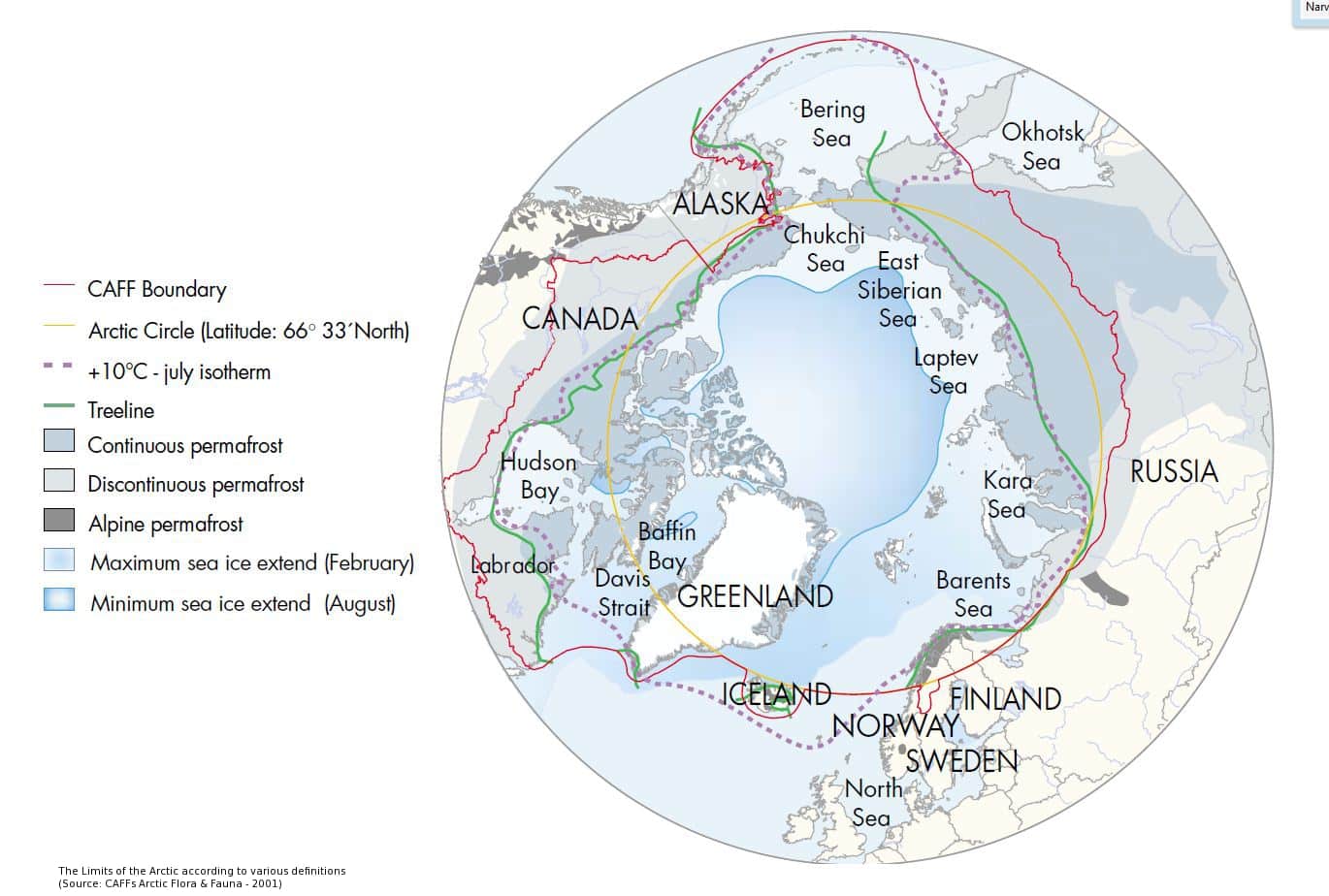Arctic Adaptation
Survival in the Arctic is demanding and risky. Over the years, animals and birds have developed sophisticated means for dealing with the extremes intrinsic to the Arctic climate. There are three basic ways that homeotherms (animals that create heat internally) handle the arctic cold weather:
Migration (get out of here)
Hibernation (extreme conservation)
Resistance (block out the cold)
All require a great deal of sophisticated and efficient natural adaptations. For the non-migratory and non-hibernators, heat management becomes the critical factor. To maintain a specific body temperature, heat is either contained by a well-insulated coat or feathers or generated internally through energy created by the breakdown of food. The adaptations spin off these two fundamental principles of heat conservation.
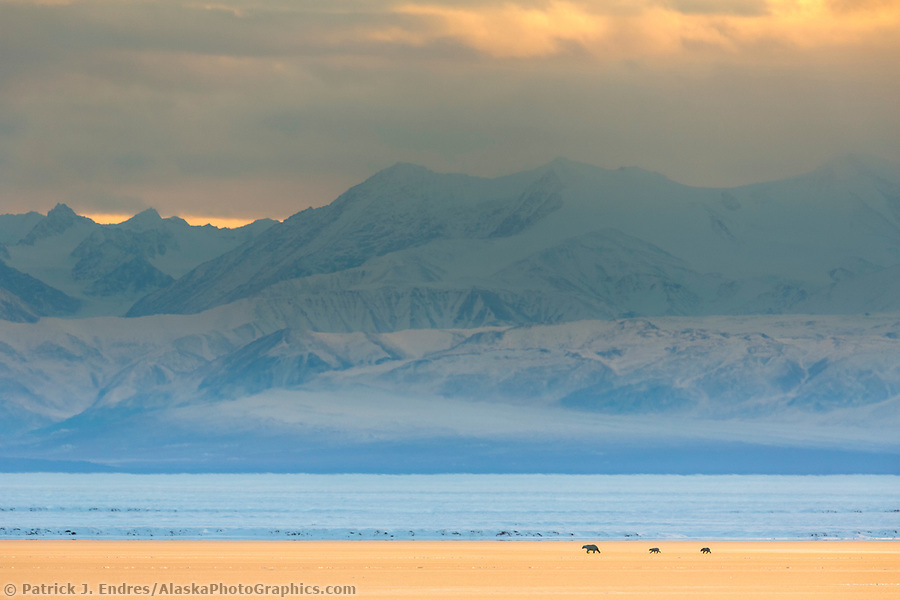
Polar bears on sea ice in the Beaufort Sea, the Romanzof Mountains of the Brooks Range in the distance. Arctic National Wildlife Refuge, Alaska. (Patrick J Endres / AlaskaPhotoGraphics.com)
Allen’s Rule
Allen’s Rule suggests species in the far North have a greater body mass per surface area ratio. In other words, There is less total body surface area to lose heat through in proportion to their overall size. Small ears, shortened noses, etc., are such adaptations. The musk ox is an animal that displays the characteristics of Allen’s Rule.

Adult bull muskox walks along the snowy tundra of Alaska’s Arctic North Slope. (Patrick J. Endres / AlaskaPhotoGraphics.com)
Insulation
Thick blubber and fur insulate the polar bear against the cold, and its translucent fur, which appears white or cream-colored, camouflages it from its prey. Following Allen’s Rule, The bear has a short tail and small ears that help reduce heat loss, as well as a relatively small head and long, tapered body to streamline it for swimming. Stiff hairs on the soles of its paws provide insulation and traction on ice.
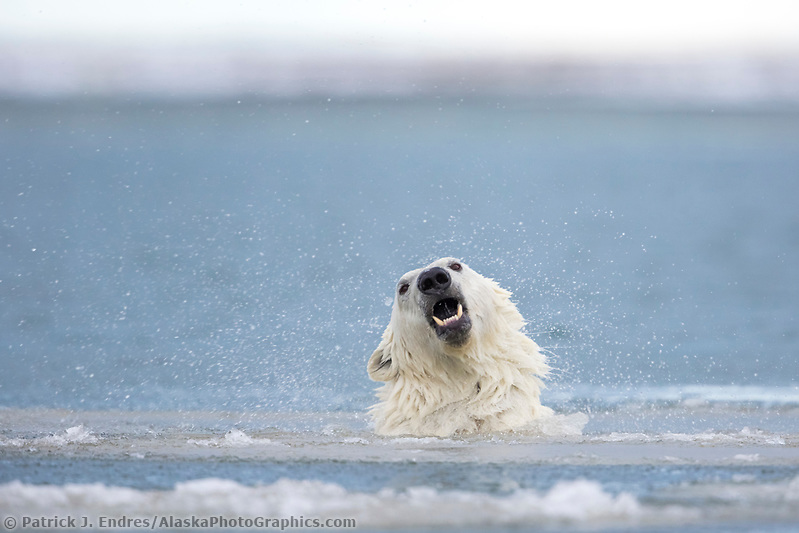
A polar bear shakes off the water while swimming in the Beaufort Sea, Arctic, Alaska. (Patrick J Endres / AlaskaPhotoGraphics.com)
Travel
Efficient travel is also essential in the snowy conditions found in the Arctic. Predators and prey have developed effective means of travel and transport through the snowy and icy environs. The Ptarmigan, for example, has feathery feet that serve as snowshoes, enabling them to move more easily across the snow. Other Arctic wildlife, like the snowshoe hare, lynx, and caribou, has enlarged feet that aid their travels on the snow. Moose have long, thin legs that help them walk through tundra and snow. In Alaska’s Arctic, the lynx relies heavily on the snowshoe hare as a prey species. The Lynx population tends to follow the approximately 10-year-long rise and decline of snowshoe hare numbers.
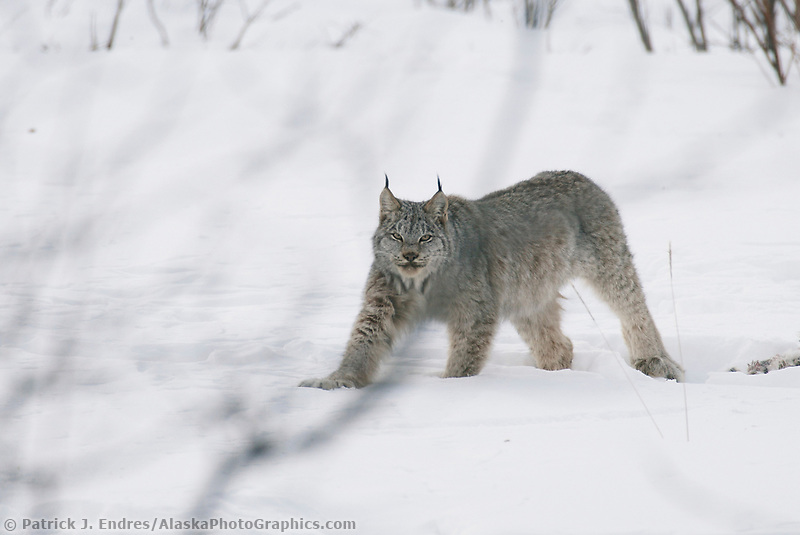
Lynx tucked away in the winter, the snow-covered boreal forest of the Brooks Range, Arctic, Alaska (Patrick J. Endres / AlaskaPhotoGraphics.com)
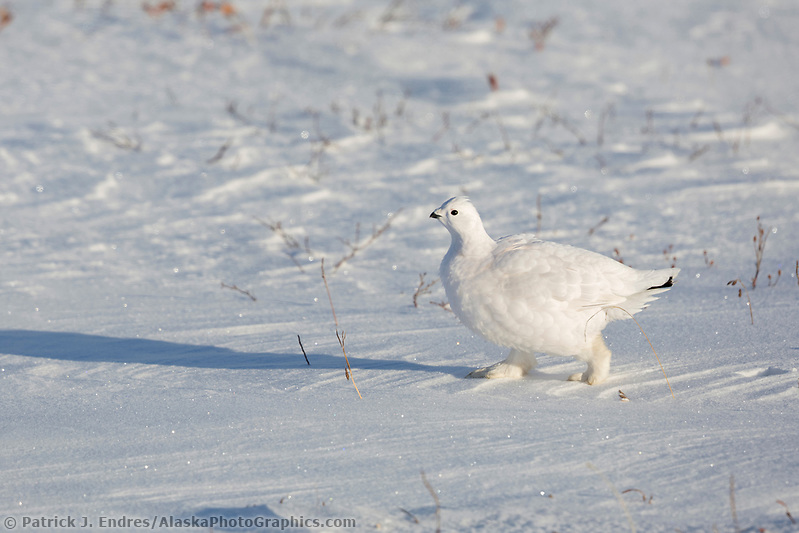
Willow ptarmigan in the pure white winter phase uses feathery feet to walk on the snowy tundra of the Alaska Arctic. (Patrick J Endres / AlaskaPhotoGraphics.com)
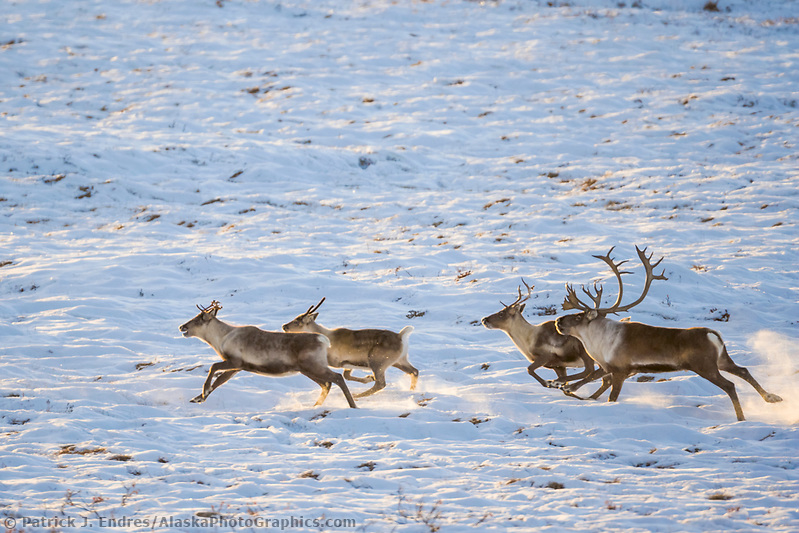
Barren ground caribou run along the Arctic coastal plains Arctic Alaska. (Patrick J. Endres / AlaskaPhotoGraphics.com)
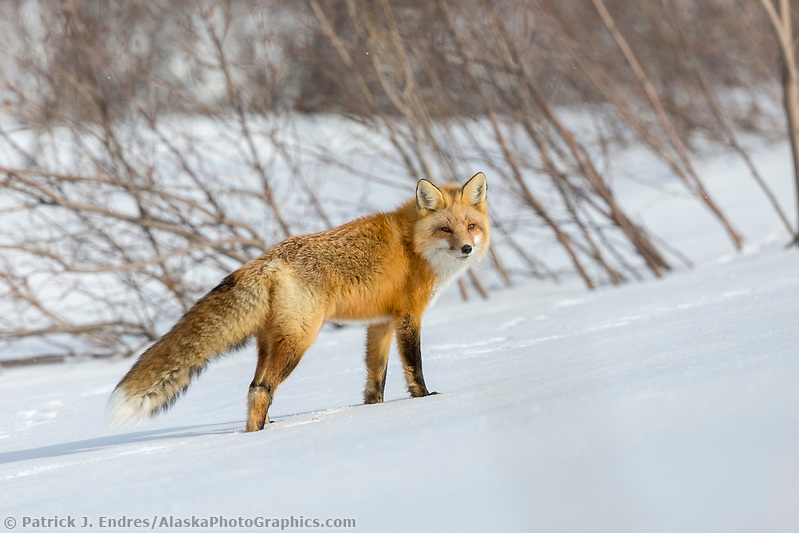
Red fox in the snow in Alaska’s Arctic. (Patrick J Endres / AlaskaPhotoGraphics.com)
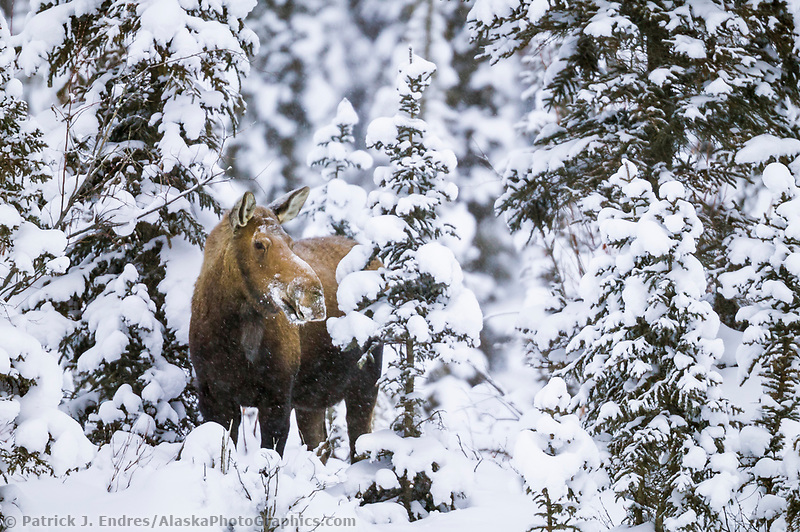
Cow moose in the snowy boreal forest of spruce trees, Brooks Range, Alaska (Patrick J Endres / AlaskaPhotoGraphics.com)
Cryptic coloration
Cryptic coloration (camouflage) serves both the hunter and the hunted. Arctic hares are white in winter except for a slight black tip on the ears and are well camouflaged from predators. On the other hand, polar bears benefit from their white color to help disguise them when stalking seals on the ice.
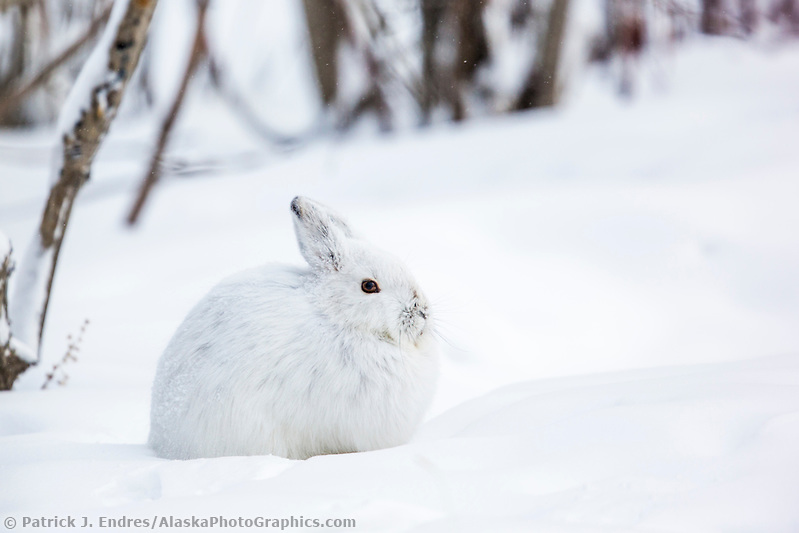
Snowshoe hare in white winter fur, Brooks Range, Alaska. (Patrick J Endres / AlaskaPhotoGraphics.com)
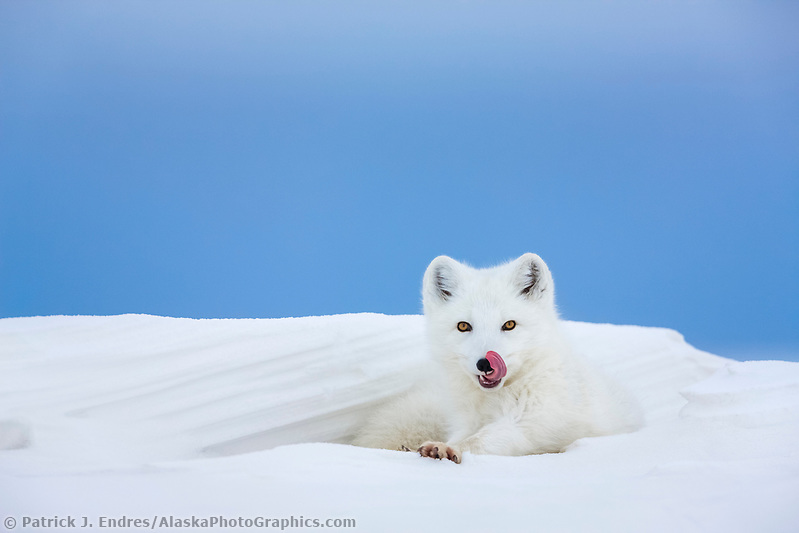
An Arctic fox in a white winter coat rests in a snowdrift along a lake in Alaska’s arctic north slope. (Patrick J. Endres / AlaskaPhotoGraphics.com)

A flock of willow ptarmigan on the snowy tundra of the Alaska Arctic. (Patrick J Endres / AlaskaPhotoGraphics.com)
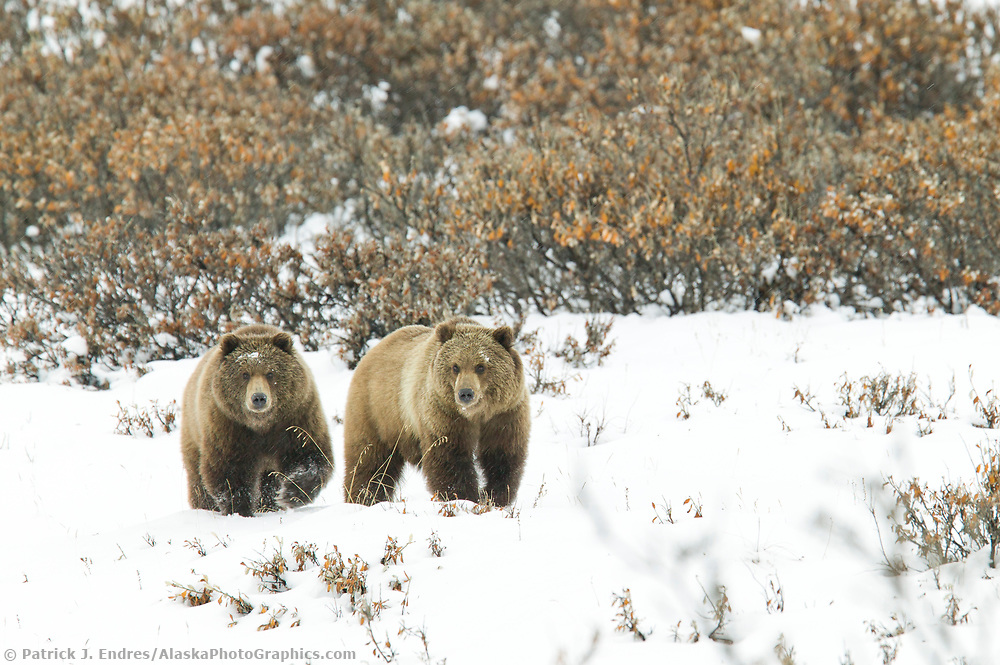 Surviving Alaska’s Arctic
Surviving Alaska’s Arctic